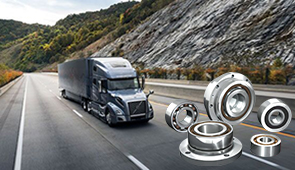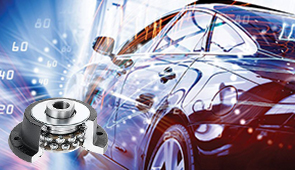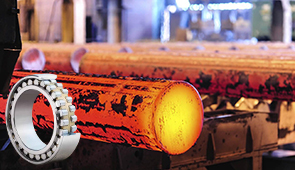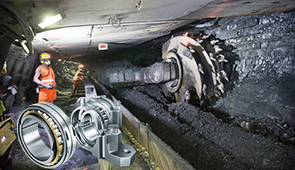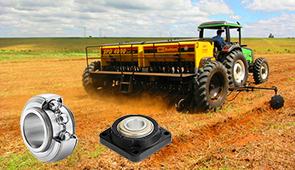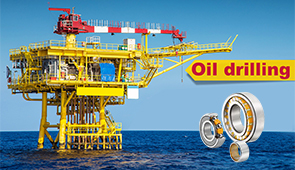Causes of Wheel Bearing Failure: Why Your Wheel Hub Assembly Goes Bad
Wheel bearing failure is one of the most common yet overlooked issues that can severely impact your vehicle’s performance and safety. These small yet crucial components are essential for ensuring smooth wheel rotation and maintaining proper alignment. However, when a wheel hub assembly starts to fail, you may experience a range of problems, from unusual noises to decreased handling performance. Understanding the causes behind wheel bearing failure is critical not only for extending your vehicle’s lifespan but also for preventing costly repairs down the road. In this article, we will explore the primary reasons why wheel bearings wear out, the warning signs of failure, and how you can take preventative measures to keep your wheel hub assembly in peak condition. Whether you’re an automotive enthusiast or simply a driver wanting to safeguard your investment, this guide will provide actionable insights to keep your wheels turning smoothly.
What are the most common causes of wheel bearing failure?
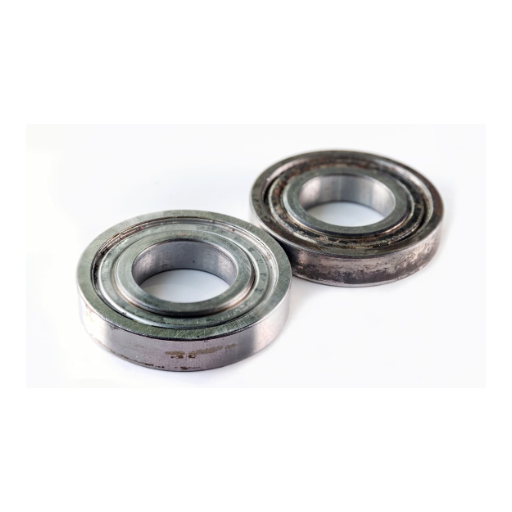
Impact damage from potholes and curbs
One of the primary causes of wheel bearing failure is the pothole, curb, and other major road irregularity collision damage that is inflicted onto the vehicle. During these jolting encounters, enormous impact loads are delivered to both the wheel hub assembly and the wheel bearing. This impact could potentially cut or damage the raceways and internal parts of the bearing, leading to loss of structural integrity, increased wear and tear, or even catastrophic failure.
The road surface quality has an impact on the frequency of wheel bearing damage since the constant vibration and impact from poorly maintained roads places severe strain on the component. Research shows that imperfect features, such as potholes, can transfer forces that exceed several thousand pounds per square inch onto the wheel bearing, far surpassing its stress tolerance limit. These forces not only damage the rolling elements but also misplace the correct spacing and alignment, as well as rotational position of the elements within the assembly, leading to increased friction and heat during operation.
This risk can be mitigated by observing safe driving habits including slowing down in the presence of discernible road hazards, and avoiding the curb when turning and parking. Furthermore, conducting regular checks at the vehicle’s suspension and alignment will aid in minimizing the impact of such forces on the wheel bearing system.
Water and contaminant infiltration
The penetration of water and contaminants significantly threatens the lifespan and effectiveness of wheel bearing systems. Water, together with contaminant particles like dirt or debris from the roads, can seriously damage the bearing lubrication. This loss of lubricant effectiveness increases friction, wear, and even overheating during operation. Moreover, exposure to water increases the rate of corrosion on metallic components, further reducing the bearing’s lifespan.
To control these risks, manufacturers fit seals that block outside substances from entering the bearing casing. Seal effectiveness can decline as a result of mechanical wear, extreme temperature changes, or poor installation. Therefore, routine inspection and maintenance is crucial to find broken seals or contamination leaks.
Modern design techniques now use corrosion resistant materials and high-grade synthetic lubricants for further increasing the system’s durability. Active strategies such as replacing applicable seals and maintaining proper lubricant levels form critical measurements for sustaining performance and extending the life of wheel bearing assemblies operating under harsh conditions.
Improper installation of new bearings
The new bearing components are among the leading causes of bearing systems failing prematurely owing to their improper installation. Neglecting proper mounting procedures through the application of excessive force or inadequate tools may lead to damage of the bearing raceways and rolling elements. Not properly marrying the bearing in the place of installation may lead to friction, increased overheating, or deterioration due to uneven load distributions.
The significance of the procedures emphasized by the manufacturer should be followed closely during the installation process. Studies reveal that improperly mounted bearings lead to a reduction in their operational lifespan by almost fifty percent. Installing specialist tools like hydraulic presses or induction heaters for mounting can greatly lower the risk subjected to damage during mounting. Furthermore, ordinarily sterilizing the area bearing blocks because minute dirt may lead to bearing damage in the form of abrasion over time.
Constantly observing the area where bearings are fixed will result in noticing other unnoticed elements that need correcting such as removal of gapping, aligning the pieces if needed, or putting the warranted amount of lubricant on its respective place. By following these measures, the system becomes likely to avoid the undesired expensive system failure.
What maintenance issues lead to wheel hub assembly failure?
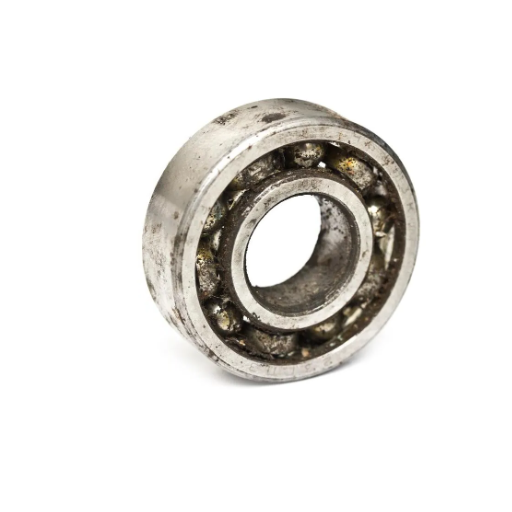
Lack of proper lubrication in the wheel bearing
Lack of or improper lubrication in wheel bearings is a leading cause in failure of wheel hub assemblies. Modern wheel bearings are designed to function under very specific conditions; for the most part, lubricants must be free to do work in minimizing friction and wear. If the lubricant is insufficient because it is either below optimal levels or the lubricant itself gets spoiled due to contamination or overheating, the internal components of the bearing can start scraping against each other, causing significant wear and ultimately failure.
Some of the more common causes of insufficient lubrication are incorrect lubricant type, water ingress, and improper sealing of the bearing housing. For example, grease not suited for high-temperature operation can fail at elevated temperatures, shearing losing viscosity and protective properties. Also, other factors like driving through heavy rain or flood-type conditions, can introduce unwanted water or debris into the bearing assembly, undermining lubrication efficiency.
Recent studies have shown that wheel bearings which do not have proper lubricants experience frictional heat that can raise their operating temperature by over 50%, severely destroying the bearing material and internal structure. Routine checks, regular upkeep of seals, and usage of high-grade lubricants, built for that specific purpose will prevent failure and uphold the wheel hub assembly.
Improper wheel bearing service techniques
Improper servicing of wheel bearings blunders is often the result of ignoring basic guidelines, text instructions or using the wrong tools. Very often, the over-tightening or under-tightening of the bearing during installation is a problem. This problem alone leads to uneven load distribution, accelerated wear, and premature failure of the assembly. A more common fault is the reuse of old seals. This renders the protection against contaminants, dirt, or moisture ineffective and accelerates corrosion and degradation of bearing components.
Furthermore, the cleaning of bearing housings and lubrication pathways adds debris which is a potent abrasive. This significantly increases friction and reduces operational efficiency. Not adhering to the required type and grading of lubricant drastically escalates operational wear and temperature. Research indicates that bearing inadequately lubricated can see a lifespan reduction of up to 50%.
To optimize the lifespan and functionality of the wheel bearing system, technicians are advised to adhere to OEM guidelines, utilize torque wrenches for precision, and repair in a contamination-free environment.
How do environmental factors affect wheel bearing lifespan?
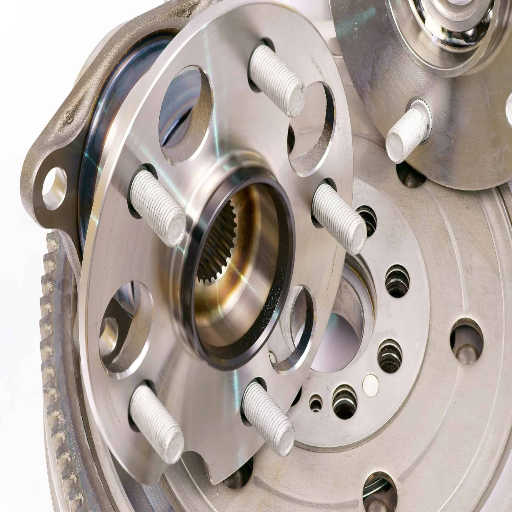
Salt and road chemicals causing corrosion in the hub assembly
The damage caused by salt and chemicals used for de-icing roads is highly detrimental to the functional endurance and structural integrity of wheel hub assemblies. Salt, which is prevalent in harsh winters for ice control, aggressively corroded metal parts by rusting due to moisture and oxygen which chemically reacts with water and air. This reaction is most pronounced in the wheel hub region because of the ions in water combined with chemicals and water spray during wet weather which creates a very damaging environment.
Corrosion not only weakens the hub assembly structure but also damages crucial sealing surfaces, which allows harmful contaminants to enter the wheel bearing system. This kind of pollution can cause excessive bearing failure, increase wear and tear, rolling resistance, and worsen efficiency and safety. Research shows that vehicles consistently operating in high salt regions may experience up to 3a 0% decrease in hub assembly lifespan compared with milder regions.
To minimize these impacts, regular maintenance is critical. It consists of washing the undercarriage of the vehicles to get rid of salt build-up, inspecting seal gaps for position shifts, and applying dielectric or anti-corrosion grease to cut down outer layer components and offer protection. By following these suggestions, the effect of environmental factors can be minimized, thus increasing the efficiency hub assembly and correctly associated system.
Extreme temperature fluctuations affecting bearing integrity
Tolerating severe temperature shifts immensely affects bearings due to thermal expansion and contraction. While operating at an elevated temperature, the bearing parts, such as the inner and outer races and the rolling elements, change dimension, which is bound to change load distribution and clearance. At the same time, sharp drops in temperature result in the contraction of the material. This constriction is highly likely to increase stress concentration and make the bearing structure brittle. Frequent cycling through these temperature extremes will lead to thermal cycling and accelerate material fatigue, causing premature failure.
One glaring problem of steel bearings with polymeric seals is the mismatch of thermal expansion coefficients. Such discrepancies can cause micro-cracks to form, loss of alignment, and decrease the precision of operational accuracy. Research indicates that bearings subjected to temperature fluctuations exceeding 50 °F or 28 °C are more prone to wear and have a reduced lifespan.
To lessen these impacts, engineers suggest the implementation of specially designed bearings made from hybrid ceramics and other materials with a higher tolerance to heat, or those with thermal resistant coatings. In addition, switching to synthetic oils instead of traditional lubricating oils is essential because they better retain viscosity over a wide temperature range, and therefore ensure consistent lubrication.
What manufacturing defects might cause a wheel bearing to go bad?

Poor quality control in bearing production
If quality control is not properly followed during the manufacturing processes of wheel bearings, it can result in operational complications as well as earlier-than-expected damage to automotive systems. Ineffectively overseen production processes oftentimes lead to bearings having dimensional inaccuracies, such as cross-sectional bore calibrations and raceways being out of alignment. These discrepancies worsen the operational inefficiencies by creating an imbalance in workload distribution and frictional heat during the use of bearings. In addition, a weak selection of materials or incorrect methods of heat treatment during the bearings’ production greatly undermines it’s integrity, making them vulnerable to further damages, such as damage over time, structural fatigue, and in some cases, total collapse when applied with excessive force for a prolonged period.
Another key aspect that contributes to the manufacturing defects of the bearings is the hidden contamination of the manufacturing environment. The assembly process often has micro fibers of dirt, metal, and sometimes machining fragments that act as bearing rolling elements or raceways. These contaminants cause damage over time when rolling, such as pitting or abrasion, which further leads to the degradation of bearing functioning. For these reasons, the requirements of clean room standards are very important, along with advanced methods of clean and nonclean inspection techniques. Additionally, installation of automated vision systems for the identification of minute and granual surface level flaws can greatly improve the quality standards, especially the overall value assurance system.
Inadequate lubricating solutions, specifically in the case of pre-lubricated bearings, can be attributed to a lack of quality control measures during manufacturing. Ineffective lubricating materials can be damaging due to insufficient covering, active wear, and adverse working conditions like high temperatures or speed fluctuations. Proper bearing assembly requires exhaustive testing, including but not limited to endurance trials and lubricative proficiency evaluations. This step is vital for assuring the predetermined functional goals will be achieved. By tightening quality control standards at all inspection points, starting from raw material checking and finishing with assembly testing, manufacturing defects can be significantly reduced. This optimizes the operational life of the bearings and promotes the reliability and safety of the system as a whole.
Defective seals allowing contaminants into the wheel hub
Seals that are not functioning optimally on wheel hubs can have a profound effect on the entire system’s performance as well as greatly reduce its lifespan. A seal that offers protection will certainly attempt to keep contaminants such as dirt, water, and other forms of debris at bay from entering the wheel hub assembly. However, if the seal gets damaged or broken, is improperly installed, or simply worn out over time, the desired seal may not provide any augmented protection. Once a breach occurs, contaminants can infiltrate the system, which will begin to accelerate the rate of bearing wear, corrosion, and mechanical failure. Such failures not only compromise the performance of the vehicle but can also cause safety hazards, especially for heavy-duty transportation and industrial machines.
Contamination of the wheel hub is also done by a lubricant that is bound to fail in its intended purpose of reducing friction, thereby speeding up the bearing as well as the heater, and them working at the same time. Worn and dirtied lubricants do not meet the needed standards of viscosity, rendering them ineffective. The worsened conditions will act as a factor that will aid the deterioration of bearings, creating a cycle bound to spell disaster for the system and fuel needless wheel hub assembly replacements – something expensive, dangerous, and utterly unnecessary. Contamination also leads to certain moving parts being aligned incorrectly, straining the system while reducing the system’s overall efficiency.
Internal components are protected by high-performance seals, calibrated and manufactured from abrasive, high-temperature, and harsh chemical environments. In addition, maintenance and inspection of seals preemptively address seal failures that could potentially occur. The reliability and life span of the wheel hub are bound to improve when condition monitoring systems meant to detect contamination and seal degradation are applied early. The application of vigorous design coupled with preventive maintenance, real-time monitoring, and seal exclusion ensures that contaminants do not compromise the operational efficiency and safety of the wheel hub assembly for an extended period.
When should I replace a wheel bearing to prevent failure?

Warning signs that wheel bearings require attention
The failure of wheel bearings can pose serious safety problems for any vehicle, making them one of the most critical parts of a vehicle’s drivetrain. Because of this extreme safety risk, it is paramount to monitor for suspicious warning signs that a vehicle is malfunctioning. It is also vital to address any failures as soon as they are spotted.
- Unusual noises: Hearing any sort of grinding, humming or growling while operating the wheels, particularly during turns, is a sure sign of damage to the bearings. These sorts of noises are indicative of worsening conditions and tend to worsen over time. Generally the worsening conditions worsen these noises even more.
- Excessive wheel play: Noticing a lot of wobbling or loosening in an already spinning wheel is another surefire sign of malfunctioning bearings. Taking a closer look at the vehicle by raising and checking for movement in the wheel both manually and sideways makes detecting this defect easy.
- Uneven tire wear: Losing the ability to properly control the vehicle can severely affect its efficiency and can also produce shocking changes in fuel consumption, all of which are telltale signs of a broken wheel bearing. This condition results in improper alignment, which leads to oddly shaped wear patterns on the tires.
- Vibration or wobble: Gripping the steering wheel and noticing the vehicle shaking or wobbling at higher speeds is a primary indicator of wheel bearing problems.
- ABS activation: Malfunctioning bearings can affect the operation of the anti-lock braking system (ABS). This failure may activate the ABS indicator on the dashboard.
- Hub or wheel overheating: The hub or wheel region may become excessively hot to touch or give off a burning smell. This can happen due to friction from the failed bearing.
These issues, if detected early, can be managed with thorough inspection and professional maintenance, thus averting total bearing failure. Advanced diagnostic equipment alongside modern sensors can monitor bearing condition in real-time, further enhancing their reliability and safety.
Recommended replacement intervals for front wheel bearings
The replacement intervals for front wheel bearings are defined differently due to variations in bearing quality, vehicle type, and driving conditions. Most manufacturers suggest an inspection every 30,000 to 50,000 miles. However, modern vehicles bolstered with high-quality wheel bearings stand to benefit from not having to replace them for up to 100,000 miles if operating under normal conditions. It is crucial to always reference the owner’s manual or speak to the manufacturer to clarify the prerequisites associated with your make and model.
Driving conditions bear the most impact in prolonging or shortening the lifespan of front wheel bearings. Vehicles regularly subjected to harsh weather, such as off-road terrains, heavy rain, and snow, can expect to have a faster depletion rate on bearings. The same can be said for excessive loads, aggressive driving, and frequent towing. Routine maintenance can assist in monitoring general bearing performance and ensuring timely replacement is done before facing the risks of other damaging complications.
Advancements in technology, particularly with new materials, allow for further optimization of modern vehicles’ service intervals. For example, many front wheel bearings now feature sealed units with lifetime lubrication, which are less prone to contaminant exposure and operational wear. However, fully sealed systems still have degradation mechanisms due to mechanical loads. These systems can be optimized using condition-monitoring systems like acoustic sensors or temperature-monitoring devices to aid in predictive maintenance. Integrating these measures alongside routine maintenance helps preemptively manage wheel bearing replacement, maintaining vehicle safety and operational efficiency.
Frequently Asked Questions (FAQs)
Q: What are the common signs of a bad wheel bearing?
A: Common signs of a bad wheel bearing include unusual noises like grinding, humming, or growling that change with vehicle speed, vibrations felt through the steering wheel, uneven tire wear, and the vehicle pulling to one side when driving straight. You may also notice the wheel feels loose when jacked up or experience ABS warnings. If you suspect a failing wheel bearing, it’s important to consult a mechanic, as continuing to drive can cause significant damage to the wheel assembly and other components.
Q: Why do wheel bearings fail prematurely?
A: Wheel bearings fail prematurely for several reasons. Poor installation is a common cause, where improper torque on the axle nut creates excess stress on the bearings. Water or contaminant intrusion due to damaged seals can cause corrosion. Driving through deep water, impact damage from potholes, manufacturing defects, and excessive heat from brake problems all put stress on the wheel bearings. Regular maintenance and avoiding harsh driving conditions can extend bearing life.
Q: How can I tell if my wheels are misaligned, and how does this affect bearings?
A: Signs your wheels are misaligned include uneven or rapid tire wear, vehicle pulling to one side, crooked steering wheel when driving straight, and squealing tires. Misalignment puts uneven stress on the bearings by forcing them to support the weight of the car at improper angles. This can cause premature wear of the wheel bearings, leading to eventual failure. Regular alignment checks, especially after hitting potholes or curbs, can help prevent bearing damage.
Q: What happens if I continue driving with a failing wheel bearing?
A: Continuing to drive with a failing wheel bearing is dangerous and can lead to several serious issues. The bearing might seize completely, locking up the wheel while driving. It can also cause significant damage to related components like the CV joint, hub, and rotor. The wheel could potentially separate from the vehicle in extreme cases. Additionally, it puts stress on the wheel and other bearings, reducing control of the vehicle. Once you notice symptoms of a failing wheel, you need to replace the bearing promptly.
Q: How long do wheel bearings typically last?
A: Wheel bearings are designed to last between 85,000 to 100,000 miles under normal driving conditions. However, several factors can affect this lifespan. The quality of the bearings installed (OEM bearing vs. aftermarket), driving conditions (rough roads put more stress on the bearings), exposure to water or contaminants, and proper installation all impact longevity. Some drivers may need to replace the hub assembly as early as 30,000 miles if they frequently drive on poor roads or through water.
Q: What causes wheel bearings to go bad faster in some vehicles?
A: Several vehicle-specific factors can cause wheel bearings to go bad prematurely. Heavy vehicles put more weight on the bearings, causing faster wear. Performance or modified vehicles with stiffer suspensions transfer more road impact directly to the bearings. Vehicles driven in coastal areas face increased corrosion risk from salt exposure. Additionally, certain vehicle models may have design issues that place excessive stress on the wheel bearings, and lower-quality bearings sometimes fail earlier than premium options.
Q: Is it necessary to replace wheel bearings in pairs?
A: While it’s not necessary to replace wheel bearings in pairs, many mechanics recommend it for vehicles with high mileage. If one bearing has failed, the bearing on the opposite side has likely experienced similar wear and stress. Replacing them together can ensure balanced handling and save on labor costs, as most of the work involved in replacing the bearings is already being done. However, if the vehicle is newer or the failing wheel bearing was damaged by a specific incident (like hitting a pothole), replacing just the damaged or worn bearing may be sufficient.
Q: How can I extend the life of my wheel bearings?
A: To extend wheel bearing life, ensure proper installation with the correct torque on the axle nut. Avoid driving through deep water, which can compromise seals. Drive cautiously over potholes and rough roads to minimize impact stress on the bearings. Keep your wheels properly aligned, as misalignment can cause the bearings to wear unevenly. Use quality parts when replacing bearings, preferably OEM or premium aftermarket brands. For serviceable bearings, regular repacking with fresh grease can help maintain their condition, though most modern vehicles use sealed bearings that allow the wheel to spin smoothly without maintenance until replacement is needed.
UCTH213-40J-300 with Setscrew(inch)
CNSORDERNO: Normal-duty(2)
TOGN: UCTH213-40J-300
SDI: B-R1/8
SD: 2 1/2
UCTH212-39J-300 with Setscrew(inch)
CNSORDERNO: Normal-duty(2)
TOGN: UCTH212-39J-300
SDI: B-R1/8
SD: 2 7/16
UCTH212-38J-300 with Setscrew(inch)
CNSORDERNO: Normal-duty(2)
TOGN: UCTH212-38J-300
SDI: B-R1/8
SD: 2 3/8
UCTH212-36J-300 with Setscrew(inch)
CNSORDERNO: Normal-duty(2)
TOGN: UCTH212-36J-300
SDI: B-R1/8
SD: 2 1/4
UCTH211-35J-300 with Setscrew(inch)
CNSORDERNO: Normal-duty(2)
TOGN: UCTH211-35J-300
SDI: B-R1/8
SD: 2 3/16
UCTH211-34J-300 with Setscrew(inch)
CNSORDERNO: Normal-duty(2)
TOGN: UCTH211-34J-300
SDI: B-R1/8
SD: 2 1/8










